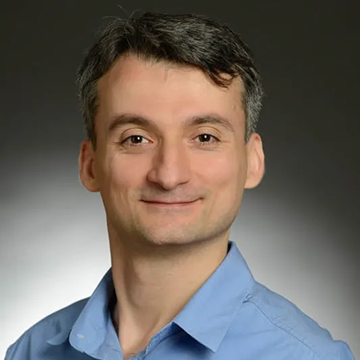Welcome Ertuğrul Özbudak, PhD

Ertuğrul Özbudak, PhD
Robert Laughlin Rea Professor of Anatomy
Professor of Cell & Developmental Biology
Bio
Ertuğrul Özbudak, PhD, grew up in Istanbul and obtained his undergraduate degree in physics at Bogazici (i.e., Bosphorus) University in Istanbul. He then obtained his doctorate in physics at Massachusetts Institute of Technology and completed his thesis project in the lab of Alexander van Oudenaarden. During his PhD program, he investigated the underlying causes of stochastic gene expression, the functional roles of feedback loops in generating bistability (hysteresis), triggering symmetry breaking and establishing cell polarity. Later, he completed his postdoctoral studies in the labs of the late Julian Lewis and Olivier Pourquie. To support his studies, Ertuğrul received the Merck/MIT computational biology predoctoral fellowship, as well as the Cancer Research UK and Marie Curie and European Molecular Biology Organization postdoctoral fellowships. Most recently, he was selected as an Alfred P. Sloan Research Faculty Fellow.
During embryonic development, each tissue and organ establish characteristic patterns composed of several spatially organized cells. Ertuğrul considers tissue/organ patterns as a form of biological “art.” Since his postdoctoral studies, he has been investigating the mechanism controlling somite segmentation in vertebrates (an example of developmental pattern formation).
In his free time, Ertuğrul enjoys spending time with his family, playing soccer and chess, and watching epic or science-fiction movies.
The Özbudak Lab opens in June 2024, and will be located on the sixth floor of the Simpson and Querrey Biomedical Research Center.
Research Focus
The Özbudak Lab’s overriding interest is to achieve a systems-level understanding of embryonic development and pattern formation by integrating quantitative experiments with computational modeling.
Embryos develop spatiotemporal patterns by encoding and interpreting biological signals in real time. Despite unavoidable fluctuations in gene expression, embryonic development is robust and reproducible, which necessitates several mechanisms buffering stochastic gene expression. A striking example of robust spatiotemporal patterning is the rhythmic segmentation of somites, which are precursors of the vertebral column. Segmentation of somites is controlled by:
- the oscillatory expression of Hes/Her gene family, known as the vertebrate segmentation clock;
- the synchronization of oscillations among neighboring cells by Delta/Notch signaling;
- the instruction of segment boundaries by the Fgf/pErk signaling gradient; and
- a network of transcription factors and cytoskeletal regulators completing mesenchymal-to-epithelial transition, downstream of the segmentation clock and signaling pathways.
In the Özbudak Lab, single-cell confocal microscopy measurements are combined with time-resolved perturbation experiments, genome-wide techniques, biophysical modeling and computational simulations to decipher the mechanism underlying robust spatiotemporal pattern formation and cell fate determination.
Publications
See Ertuğrul's publications on PubMed.
Join Our Lab
The Özbudak Lab is composed of a multidisciplinary team from various backgrounds, including molecular and developmental biology, cell biology, bioengineering, chemical engineering and physics. The lab is actively recruiting graduate students, postdoctoral fellows and research technicians.
Graduate Students
We welcome graduate students from different programs at Northwestern University including the DGP and MSTP programs. Please reach out to Ertuğrul with your research interests and a copy of your CV. We will start accepting rotation students in August 2024.
Postdoctoral Fellows
We are actively recruiting postdoctoral fellows from diverse research backgrounds such as genetics, molecular and developmental biology, cell biology, bioengineering, chemical engineering and physics, etc. If interested, please email Ertuğrul your CV and a description of your research interests.
Research Technicians
Available research technician positions will be posted on the Northwestern Human Resources Careers website.